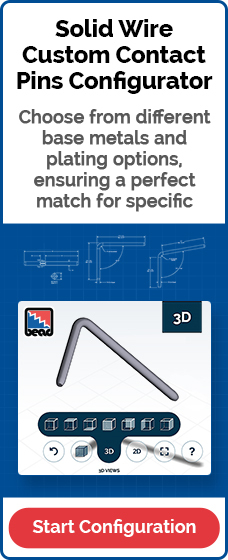Injection molding holds value across industries. In the case of military applications, where technology has to withstand some of the most brutal conditions on earth, injection molding goes the extra mile, guaranteeing uniformity while giving the option of cutting weight with high-durability plastic.
With strong material options, automated processes, and lasting products, more and more DFM engineers in the military sector rely on plastic injection molding for their projects.

What Is Injection Molding?
A cost-effective manufacturing process, injection molding allows for the large-scale production of identical parts. In short, the injection molding process entails identifying or creating a custom mold, deciding what materials are best suited for the project, injecting the molten material into the mold, waiting for it to cool, and then executing and assembling the final product.
This process can become more hands-on with more complicated designs.
 |
Tactical lantern manufactured, assembled, and tested by APM. |
A flashlight used by soldiers on the front lines, for example, needs to be both waterproof and explosion-proof, lightweight and durable, and capable of holding a charge without compromising voltage. Some models will even house as many as three PCBs.
The production of a product like a flashlight can be automated for guaranteed outcomes through a combination of pin insertion, injection molding, and overmolding.
Depending on the materials used and designs, these processes can guarantee that a product will resist extreme temperatures and withstand vibrations, as seen in gearboxes and engines.
Injection molding can be performed with a host of materials including metals, glasses, elastomers, confections, and most commonly thermoplastic and thermosetting polymers. Leveraging plastic injection molding in place of metal alternatives can result in up to 50% cost savings. That is why plastics have taken off in a variety of industries, from automotive to aerospace, medical, and even military applications.
Plastic Injection Molding In the Military
Military-grade planes are made to be airtight and withstand significant damage. They’re made up of countless connectors that hold parts together or deliver power. Fasteners and other components that keep military planes flying come out the same size and shape every time. This means they bond together more tightly, are better at dampening vibration during flight, and can even help to dampen noise so pilots can do their job better.
 On the ground, military transport rely on several similar connectors and plastic components for communications and sensors. From the smallest pin to a rubberized grip or coating, each of these elements have to endure unsteady terrain and intensive scenarios where their success is measured by their ability to perform in these conditions.
On the ground, military transport rely on several similar connectors and plastic components for communications and sensors. From the smallest pin to a rubberized grip or coating, each of these elements have to endure unsteady terrain and intensive scenarios where their success is measured by their ability to perform in these conditions.
Injection molding plays a huge part in the manufacturing for these applications, enabling strong, lasting connections. Furthermore, the production of plastic components created by injection molding is repeatable. With such consistency and precision, overmolding creates aerospace and defense components that outperform metal every time.
That doesn't mean that metal has to be excluded from the process. Injection molding can be done with or without a metal insert. In the case of electrical connectors, metal inserts hold value as they can withstand the molten temperatures of plastic and therefore can be included in the initial molding steps. When using metal inserts for electrical connectors, for example, overmolding would be leveraged to secure the contact pins. Both the insertion of the pins and the overmolding can be automated, creating opportunities for cost savings.
Through these molding processes, these pins can be held in place when placed and overmolded with molten material, which upon curing can meet the rigorous military quality standards.
Automated pin insertion can be leveraged to ensure those fasteners are placed correctly. These custom connector pins facilitate power, signal, and electro-mechanical functions to equipment that our troops depend on.
Plastic vs. Metal: Strength and Weight Considerations
Plastic injection molding can create products that are stronger than similar metal products. Inherently, plastic is corrosion-resistant, making it exceptionally reliable in products that have to withstand various environments.
Plastic injection molding companies can achieve this level of strength with a very thin wall of plastic polymer. The result is all the strength infantrymen and women need out in the field at a fraction of the weight.
Some of the most common military items to use this technology are water bottles, helmets and headgear, headsets and radios, flashlights and scopes, and hooks and fasteners.
Achieving higher levels of strength at less weight also improves logistics. Vehicles moving at a lighter weight consume less fuel. This can drastically reduce the number of resources a military base consumes, as well as their financial operations budget.
About Bead Electronics
Bead Electronics, is a global manufacturer of electronic connector pins and has been manufacturing in Connecticut for over 100 years. The award-winning company carries over 500 patents and is best known for inventing its manufacturing process called swaging. This process is a high-speed, virtually scrap-less, cold-forming process capable of producing a wide size range of metal electronic components that are consistent and cost-effective. The family-owned business is led by its fifth generation. Click here to speak to a connector pin specialist today.



